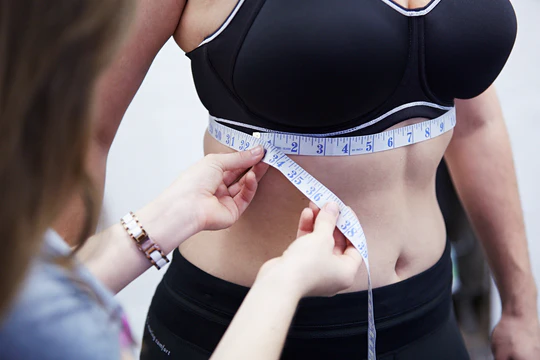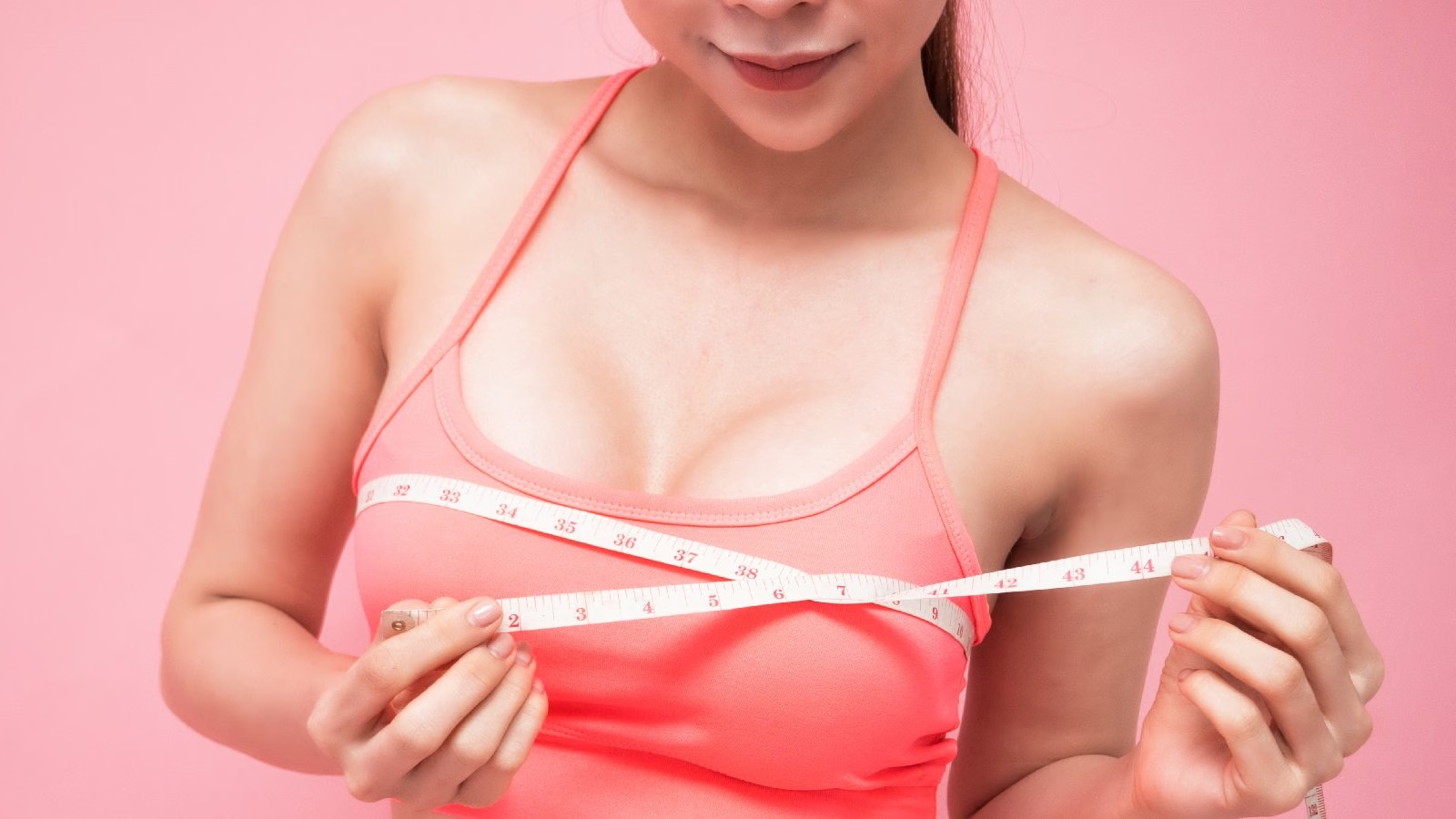Understanding bra sizes can be confusing, particularly as different countries use various sizing systems. This article will explore the key differences in bra sizing between the USA, the UK, and the rest of the world, helping to clarify how these systems compare and how to convert between them.
The Basics of Bra Sizing
Bra sizes are typically represented by a number and a letter. The number refers to the band size, which is the measurement around the ribcage just beneath the bust, while the letter represents the cup size, which is based on the difference between the bust and band measurements.
Despite this seemingly straightforward approach, the way these measurements are calculated and labelled differs by region. Here’s a breakdown of how bra sizing works in the USA, the UK, and other parts of the world.
Bra Sizing in the USA
In the USA, band sizes usually range from 28 to 50, increasing in increments of 2 inches (e.g., 28dd bras through to 32, 34, 36). Cup sizes typically begin at AA and go up alphabetically (A, B, C, etc.). However, the US system does not use the double letter system as extensively as the UK, making it less granular for women with larger cup sizes. For example, after D, the US system often jumps to DD (sometimes called E), DDD (or F), and so on.
One key difference in the US system is that some manufacturers offer different sizing structures, especially for larger bust sizes, leading to a lack of standardisation.
Bra Sizing in the UK
The UK system is slightly different. Band sizes are similar to the US system, but where the real difference lies is in the cup sizing. After the letter D, UK sizes follow a double-letter pattern for intermediate sizes. For example, UK cups progress as follows: A, B, C, D, DD, E, F, FF, G, GG, H, HH, J, JJ, and so on. Netmums have a good discussion around this topic.
This double-letter system allows for a more nuanced fit for women with larger breasts, and it is often considered more precise than the US system. As a result, UK sizing tends to be the most detailed, with brands like Freya and Panache being known for their extensive range of larger sizes.
Rest of the World: European and International Bra SizesEuropean Sizing (EU)
European (EU) sizes use a similar band measurement to the UK and US, but they measure it in centimetres instead of inches, so band sizes will typically range from 60 to 120. Cup sizes in Europe typically follow the same alphabetical sequence as the US, without the double-letter system.
Australian Sizing (AU)
Australia uses a similar system to the UK for both band and cup sizes, but with some variations. For instance, an Australian 10 band is the same as a UK 32, and cup sizes after D follow a double-letter sequence just like in the UK.
Asian Sizing
In many parts of Asia, such as Japan and China, bra sizes are also calculated by measuring band and bust, but the band sizes can sometimes run smaller, as they cater to generally more petite frames. For example, band sizes in Japan are typically written as 65, 70, 75, etc., while cup sizes are similar to the international standard.
French and Belgian Sizing
France and Belgium follow the European (EU) system but often add 15 to the band size number, resulting in larger band numbers that can confuse international shoppers. For example, a 70 band in Europe is listed as an 85 band in France.
Converting Bra Sizes Between Countries
Because each region uses a different system, converting between them is essential, especially when shopping for bras internationally. Here’s a brief guide to converting band and cup sizes:
Band Size Conversion
USA
UK
EU
Australia
France/Belgium
30
30
65
8
80
32
32
70
10
85
34
34
75
12
90
36
36
80
14
95
38
38
85
16
100
Cup Size Conversion
USA
UK
EU
Australia
France/Belgium
AA
AA
AA
AA
AA
A
A
A
A
A
B
B
B
B
B
C
C
C
C
C
D
D
D
D
D
DD
DD
E
DD
E
DDD/E
E
F
E
F
Why These Differences Matter
Understanding these differences is crucial, especially when shopping online or abroad. A well-fitting bra is essential for both comfort and health, as the wrong size can lead to issues like back pain, poor posture, and discomfort. Women who wear larger cup sizes may find the UK system more accommodating, while those who are shopping in Europe may need to adjust for the band size differences.
A Deeper Dive into Global Bra Sizing Variations
To further complicate matters, even within a single country, bra sizing can vary from brand to brand. This is particularly noticeable in regions like the USA and UK, where different manufacturers may have slight differences in their sizing charts. Many women will be familiar with the frustration of being one size in one brand and a completely different size in another. Understanding the nuances behind global bra sizing can help reduce this frustration and lead to a better overall fit.
USA Bra Sizes: A Closer Look
While the USA tends to follow a relatively simple cup progression (AA, A, B, C, D, DD, DDD, etc.), the lack of standardisation across different lingerie brands can be a challenge. For instance, some brands may label an E cup as a DD, while others might call it a DDD or F. This is particularly relevant when dealing with larger cup sizes.
The lack of a double-letter system beyond DD also means fewer increments in cup size, which can make finding the perfect fit difficult for women with larger breasts. As a result, many American women opt to shop from UK brands or use international sizing charts to find their correct size.
UK Bra Sizes: More Precision
The UK’s approach to bra sizing offers more detailed increments in cup sizes, especially for women with larger busts. The use of double letters, such as DD, FF, and GG, provides a more tailored fit, which has led many women outside the UK to turn to British brands for bras that offer a better range of sizes.
UK brands such as Freya, Panache, and Bravissimo are particularly well-regarded for catering to fuller busts, and they are often preferred by women looking for more precise sizing. The UK system’s attention to detail makes it a favourite for many women, even though it can be more difficult to convert to other sizing systems.
European Bra Sizes: Centimetres vs. Inches
In European countries like Germany and Italy, bra sizes are based on centimetres rather than inches, which is one of the first notable differences. While the band size in the UK and USA is measured in inches (e.g., 30, 32, 34), European countries use centimetres. This means band sizes are represented as 65, 70, 75, and so on, which can be confusing for shoppers used to the inch-based system.
The cups in European bras also follow the alphabetical progression (A, B, C, D, etc.) but without the double-letter increments found in the UK system. This can make the jump between sizes more noticeable and less refined for those with larger busts. However, European lingerie brands are known for their sophisticated designs, and the European system works well for women with average to smaller bust sizes.
Australian and New Zealand Bra Sizes: A Mix of Systems
Australia and New Zealand follow a system that closely mirrors the UK’s, but there are still some differences to consider. Band sizes in Australia, for example, are typically 8, 10, 12, and so on, with a direct correlation to UK sizes (e.g., an AU 10 band is the same as a UK 32). Similarly, cup sizes progress in the same way, including the double letters (e.g., DD, FF).
However, it’s important to note that just like in the UK and USA, Australian brands may vary slightly in how they label larger cup sizes, so trying on bras or consulting a brand’s specific size chart is essential when shopping.
Asian Bra Sizes: Smaller Frames and Unique Systems
In many Asian countries, bra sizes are designed for generally smaller body frames. In Japan, for example, band sizes often start as small as 60 and go up in 5 cm increments (65, 70, 75, etc.). While the cup sizes are similar to the rest of the world, the fit tends to run smaller overall, which can make it difficult for women outside Asia to find a good fit if they shop from Asian brands.
Japanese bras also tend to emphasise different aspects of design, focusing on creating a youthful and petite silhouette, which may not suit everyone’s preferences or body type.
The Importance of Measuring for the Right Fit
The confusion surrounding global bra sizes makes it all the more important to take proper measurements before buying a bra, especially if shopping internationally. A well-fitting bra should support the bust, provide comfort throughout the day, and avoid creating bulges or discomfort around the band or straps.
Here’s a simple guide to measuring your bra size:
- Measure your band size: Wrap a measuring tape around your ribcage, just under your bust. Make sure it’s snug but not too tight. Round the measurement to the nearest whole number. In the UK and US, this measurement will determine your band size.
- Measure your bust size: Now, wrap the tape around the fullest part of your bust. Again, make sure the tape is level and not too tight. Round to the nearest whole number.
- Calculate your cup size: Subtract the band size from the bust measurement. The difference between these two numbers determines your cup size. For example, if your bust measures 36 inches and your band is 32 inches, the difference is 4 inches, which would typically correspond to a D cup in both the UK and US systems.
Here’s a quick guide to common cup size increments:
- Difference of 1 inch: A cup
- Difference of 2 inches: B cup
- Difference of 3 inches: C cup
- Difference of 4 inches: D cup
- Difference of 5 inches: DD cup (or E in Europe)
How to Shop for the Perfect Bra Across Countries
If you’re shopping for bras internationally, here are a few tips:
- Consult sizing charts: Many international lingerie brands provide detailed sizing charts that include conversion tables. Always check these before purchasing.
- Read reviews: Customer reviews can offer insights into how a particular brand’s sizes run (small, large, or true to size).
- Consider trying on in-store: If possible, visit a store to try on different sizes, especially if you’re unfamiliar with a particular brand or sizing system.
- Be patient: Finding the right bra size can take time and some trial and error. Don’t be discouraged if you don’t find the perfect fit on your first try.
Final Thoughts
Although bra sizing across the world can be confusing, understanding how the systems compare and knowing how to convert between them can make international bra shopping easier. For the best fit, always measure your bust and band size and be aware of how sizing may differ depending on where you’re shopping.
When in doubt, consult the sizing charts provided by specific manufacturers, as each brand may have slight variations within their regional standards. With this knowledge, you’ll be better equipped to find the perfect fit—no matter where in the world you shop.

